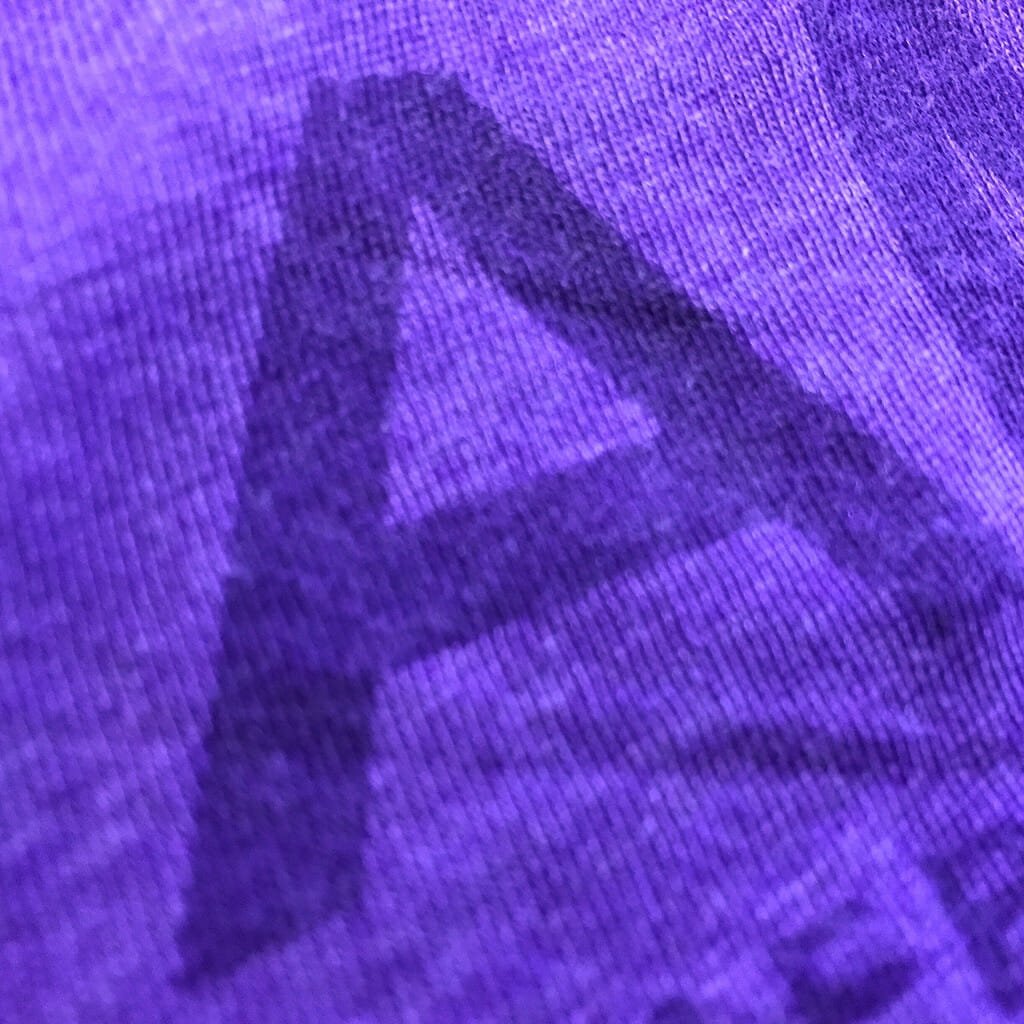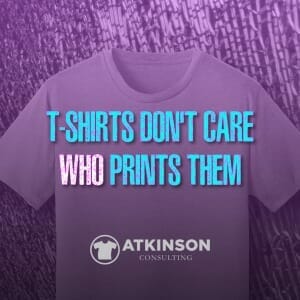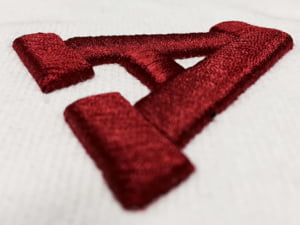As screen-printers we all want a leg up on the competition and to try out the newest gizmo or technique on the market. It’s a natural fit. Like beer and burgers. Cereal and cartoons. Rock and roll.
One really easy technique that has been around for years and hasn’t been discussed much. It’s also not available for sale from your ink distributor. It’s called Smoke ink. Never heard of it?
Funny, it’s in your shop right now.
Huh?
That’s right. It’s a simple milkshake that you can make with the inks right on your shelf today. The best part of it is that you get to use up some of those goofy colors that the “designers” forced you to use for that one job four years ago and you haven’t touched since. You know, because as t-shirt printers we’re some of the cheapest bastards ever to walk the earth. Nothing is cheaper than using up stuff you’ve already bought.
Smoke Ink Recipe
1 Part – Pre-existing mixed colors – all darks like reds, blues, browns, greens, purples, etc. No tints, yellows, or pastels.
1 Part – Black
3 to 4 Parts – Curable Reducer. The more reducer you add, the more translucent the effect will be. Experiment to get what you like.
Why should you use this?
Well for starters, using up your old ink is a sustainable method of adding value to your shop. You’ve already paid for this stuff for older orders, might as well get some life out of it now. Remember a sustainability program is a three-legged stool. Reduce, Reuse and Recycle. This hits them all, as you are reducing the use of new color mixtures, reusing and recycling old ink. It’s damn near perfect.
How should you use this?
The great thing about smoke ink is that it takes on the characteristics of the shirt color that you are printing it on. With a red shirt, it will appear to be maroon. On a royal blue shirt, it will appear to be navy. On a white shirt, it will be gray. On a purple shirt, it’s darker purple. You get the picture.
Imagine if you did a line of one color graphics with this stuff. One screen and Smoke ink can print different shirt colors and appear to have used different inks. No color washes.
Another plus is that it is translucent and since it’s mostly Curable Reducer, has very little hand.
It is the absolute best drop shadow you’ll ever find. If you are still calling out a Pantone gray or a black for this, you’ll be amazed at how good Smoke ink looks and performs. Add in a slight Gaussian Blur when you are creating your art in the computer, and you’ll swear your main object is 3D.
Smoke ink works great, but it performs best on a heathered shirt or something with a texture or pattern. What’s wonderful is that the speckled texture of the shirt shows through the ink. This has a really dramatic and valuable effect on the final appearance. Especially if you are doing a vintage or distressed graphic. Doing a “Property of” design? This is the only way to go.
Also, you can use Smoke to overprint colors in your design to make them appear to have a shade. The Smoke screen (yes, I just wrote that) can be a visual force multiplier for colors. Looking to reduce your color count? This might be the trick.
Shitty Black
I should also note that if you follow the recipe above and don’t add the Curable Reducer you can mix what I call “Shitty Black”. This isn’t Black, but a really dark whatever it is. Because you are using up all your old colors and adding equal parts Black, it can have a slight warm or cool look to the Black. Doing a lot of sponsor logo backs for charity walks and such? This is the perfect ink. Black is a cheap ink anyway. “Shitty Black” is even cheaper as you are using up ink that’s just sitting there.
When we mix these we use five-gallon buckets. They perform just like any other ink on your shelf, as that’s what they are made from. Use your regular screens and dryer temps. If the Smoke ink isn’t translucent enough, add another big gob of Curable Reducer and mix.
Talk to your art staff about this stuff. If they have any creativity flowing through their veins, I’m sure they can come up with some very interesting uses.
Ok, your turn. If you try it, post some pictures!





6 comments
Jorge Salcines
Great post here Marshall, Thanks for the “secret” sharing!
atkinsontshirt
No problem Jorge! Please let me know if I can help you with anything… -M
Shawn Webster
Best on High mesh 200+ or a regular 125/160 mesh?
atkinsontshirt
140 or higher. It will depend on your art and detail.
Antony Sharples
Omg, thank you Marshall! I’ve been playing with this for months and could never get it right!
atkinsontshirt
Great!! Glad this helped you!! -M